Asus ZenBook Flip 13 vs Microsoft Surface Book 3: which laptop is right for you?
Check out the specs, battery life, features and design on the Asus ZenBook Flip 13 vs Microsoft Surface Book 3
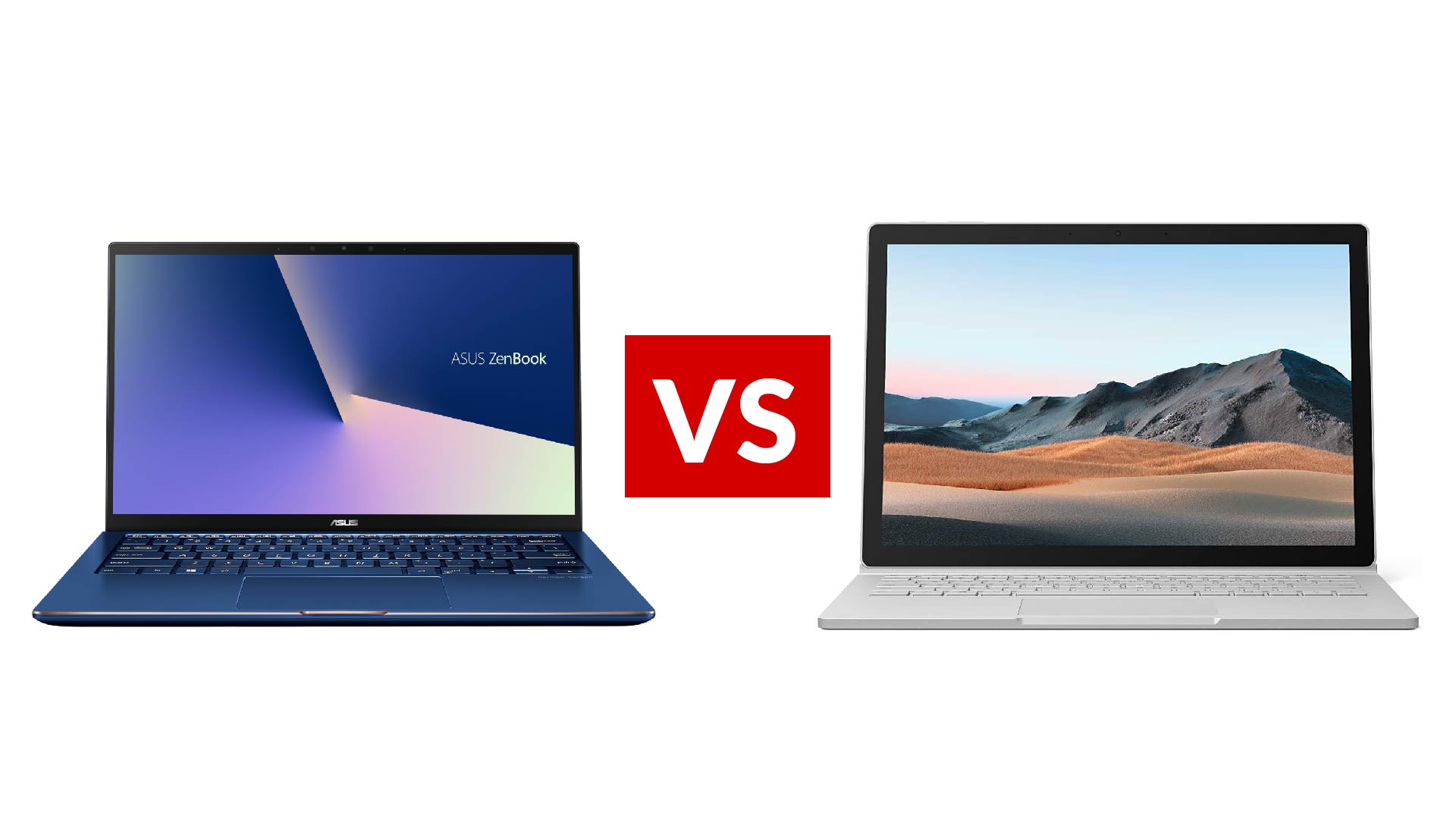
After years of disparity between full-fat laptops and tablets, the 2-in-1 laptop has grown into a fully-fledged market of its own. Here and now in 2020, two of the biggest manufacturers in either field have delivered two of the best offerings you can buy – but which is the balance for your needs?
We’re here to help you work out which is the better buy, be it in terms of cost, performance, form factor, battery life and much more. Both are among the best laptops available in 2020, but we’ll explain everything you need to know.
Read our full Asus Chromebook Flip C436 review or our Microsoft Surface Book 3 review for more info.
Not everyone is looking for the same requirements in a new laptop, so we’re here to break down the key differences between either model so you can make a selection with full confidence. It’s also important to consider for what tasks or activities you’ll be using your new 2-in-1 laptop, so you can make the best decision based on the information below.
- Check out the best laptops on the market
- These are the best 2-in-1 laptops money can buy
- All the best tablets currently available
ASUS ZENBOOK FLIP 13 VS MICROSOFT SURFACE BOOK 3: DESIGN & USABILITY
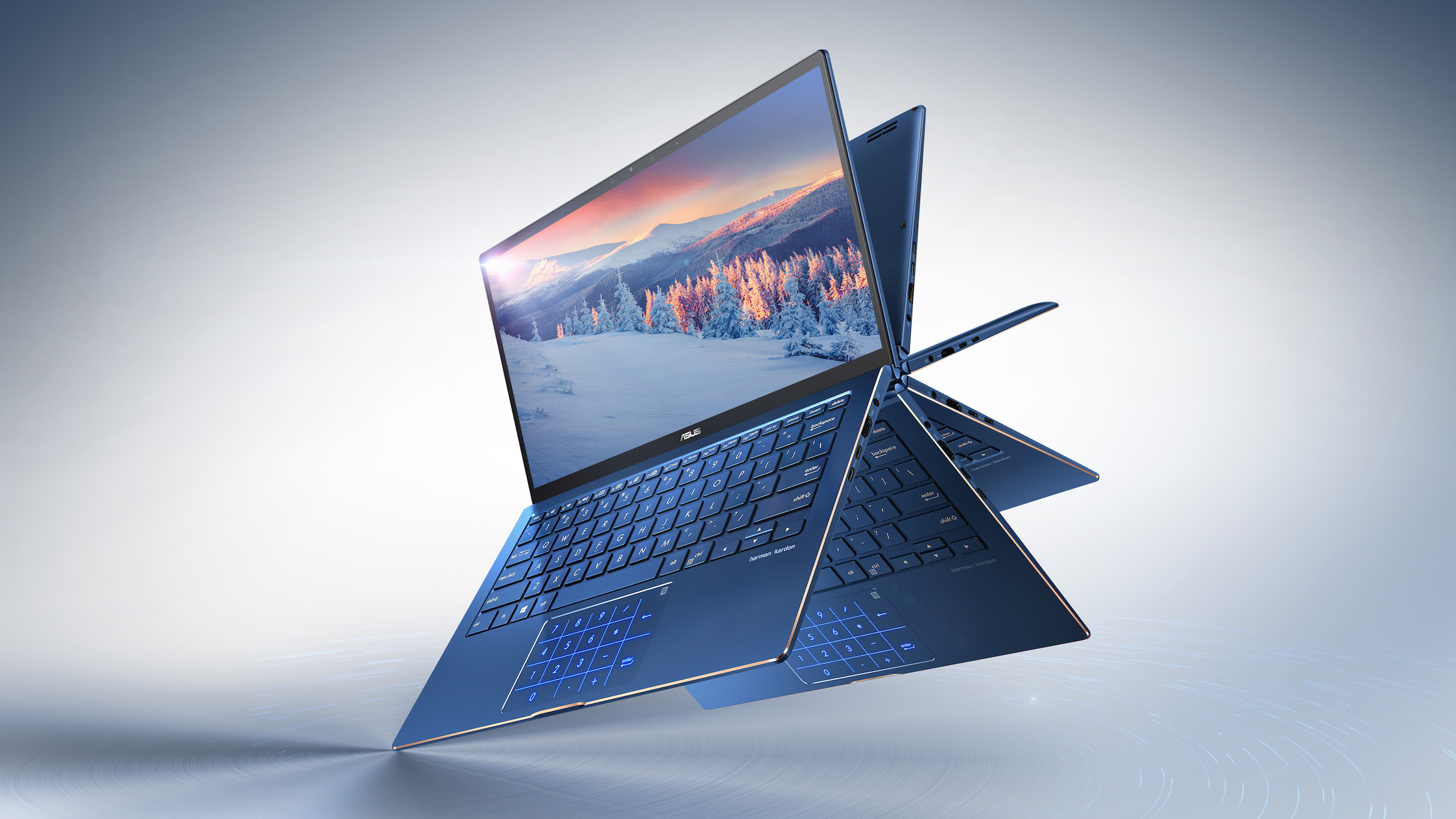
The Asus ZenBook Flip 13 is definitely the lighter of these two hybrid laptops, clocking in at a mere 2.87 pounds when compared to the 3.38 of the base 13.5-inch Intel Core i5 versions (with the i7 version coming in at 3.62 pounds and the 15-inch version weighing in a whopping 4.20 pounds).
In terms of dimensions, the Surface Book 3 unsurprisingly comes in substantially thinner – it as a tablet at its core, after all – at only 0.51 inches, while the Flip 13 clocks in at 0.67 inches. The Surface Book 3 has a slightly thicker end where the hinge is, but it’s not that noticeable thanks to its unusual design.
In terms of dimensions, the 13.3-inch LED backlit FHD makes the Flip 13 noticeably smaller than either of the two Surface Book 3 variants, but whether this is a plus or a minus comes down to whether you want a smaller device or a larger screen.
Get all the latest news, reviews, deals and buying guides on gorgeous tech, home and active products from the T3 experts
The Flip 13 comes with a full-size backlit keyboard with 1.4mm key travel, as well as a glass-covered, intelligent palm-rejection touchpad (featuring Precision Touchpad – or PTP – technology for up to four-finger smart gestures). The Surface doesn’t come with a keyboard as standard, so you’ll need to invest in one if you want to experience the full 2-in-1 experience. The Surface Pro X Signature Keyboard is a great choice, mainly because it comes with backlit keys, a large multi-touch touchpad and a Slim Pen stylus.
Both models come with their own built-in speakers and mics, with the Flip 13 featuring its own Asus SonicMaster stereo audio system with surround-sound and smart amplifier (certified by Harman Kardon for extra hipster chic). It also features an array microphone with Cortana voice-recognition support.
On the other side, the Surface Book 3 features front-facing stereo speakers with Dolby Atmos and dual far-field Studio Mics. Of the two, the Flip 13 has a fuller sound, although you can negate this issue by investing in a decent pair of headphones.
In terms of looks – and we all know we like our laptops to look snazzy whether we’re using them or not – and both come with sleek finishes. The Surface Book 3 is the most basic, with a magnesium casing that comes in a simple yet striking platinum finish. Alternatively, the Flip 13 comes in either a lovely royal blue or a more understated gun gray. We do prefer the bold look of the royal blue version, but at least you have a choice of finishes with Asus’ model.
ASUS ZENBOOK FLIP 13 VS MICROSOFT SURFACE BOOK 3: DISPLAY
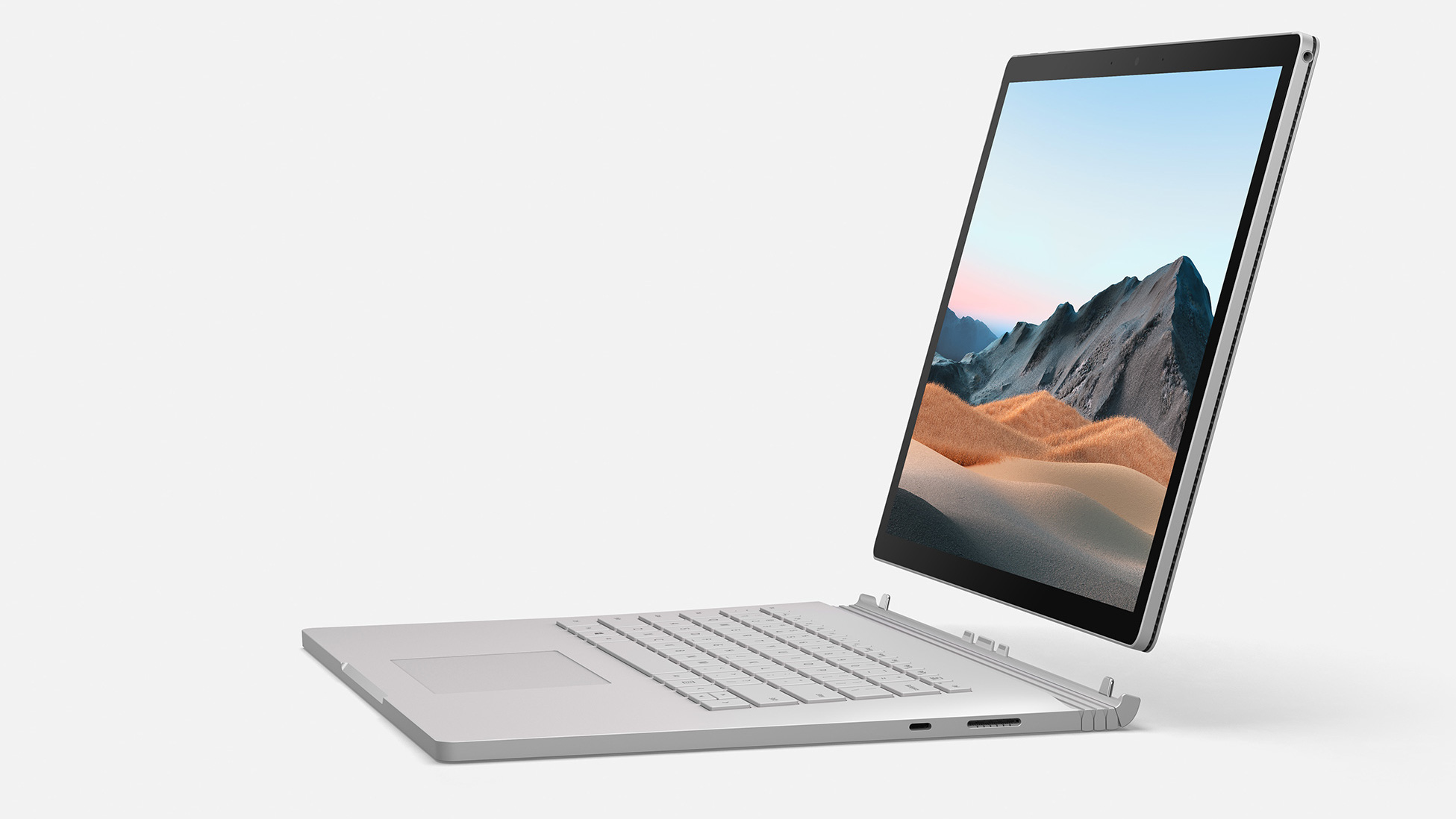
In terms of their basic versions, the Flip 13 and the Surface Book 3 with only 0.2 inches between the 13.5-inch Surface Book 3 and the 13.3-inch display that comes with the Flip 13. Both are touchscreens, as you might expect for models in the 2-in-1 spectrum, with the Flip 13’s screen offering an LED-backlit FHD (1920 x 1080) glare display with a 3.5mm-thin bezel with 90% screen to body ratio.
The Flip 13 also boasts a wide 100% sRGB color gamut and 178-degree wide-view technology. Even at a slightly smaller size than the Surface Book 3, the Flip 13’s NanoEdge display still really pops when streaming shows on Netflix or enjoying a little light gaming.
Both the 13.5-inch and 15-inch versions of the Surface Book 3 feature PixelSense displays (for ten-point multi-touch input) with a resolution of 3000 x 2000 (267 ppi) and a 3240 x 2160 (260 ppi). Both models feature an aspect ration of 3:2 and an overall contrast ratio of 1600:1. The Surface Book 3 makes an ideal canvas for sketch and drawing apps with the Surface Pen or Surface Dial, although you can technically use a stylus with the Flip 13 as well.
ASUS ZENBOOK FLIP 13 VS MICROSOFT SURFACE BOOK 3: SPECS AND OPTIONS
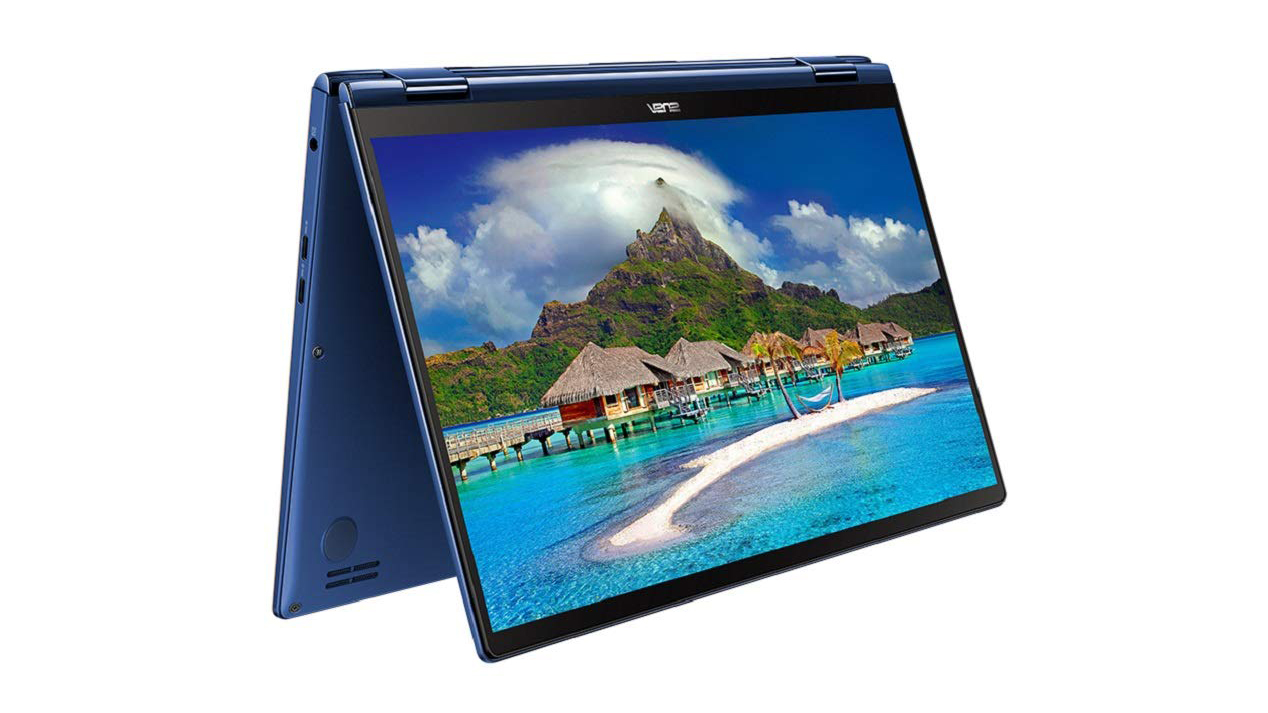
Both the Flip 13 and the Surface Book 3 come with a variety of options when it comes to specs, starting with a choice of processors. The Flip 3 can either be picked up with an Intel Core i7 CPU (1.8GHz quad-core with Turbo Boost up to 4.0GHz and an 8MB cache) or an Intel Core i5 (1.6GHz quad-core with Turbo Boost up to 3.4GHz and a 6MB cache).
The Surface Book features slightly more options with the faster quad-core 10th Gen Intel i5 or i7 processors in the 13.5-inch configuration, while the larger 15-inch version comes with the i7 version as standard. As one of Microsoft’s premium Surface devices, it’s no surprise to see it packing some decent hardware into its specs.
The 13.5-inch version of the Surface Book 3 comes in three memory configurations – including 8GB, 16GB AND 32GB – while the larger 15-inch version can be customized to support either 16GB or 32GB of memory.
Memory-wise, the Flip 13 comes in a choice of two variations, including 8GB or 16GB. To back this up, the Flip 13 comes with a selection of configurations that cover a 512GB or 256GB PCIe SSD or a 512GB/256GB SATA3 SSD.
- Best gaming laptops 2020: top laptops for gaming
- Maybe you need one of the best Chromebooks
- Here are all the best laptop bags
The Surface Book 3 also comes with solid state drive storage options with the 13.5-inch version comes in 256GB, 512GB or 1TB PCIe variants. The same options are also available for the larger 15-inch model, although this larger display and greater storage options does bump up the price.
When it comes to graphics, you’re not getting the highest end of GPUs, but the versions on offer here and strong for such a compact and hybrid device. With the Integrated Intel UHD Graphics 620 inside the Flip 13 you can certainly enjoy some light gaming on the go, although this is the only option currently available for this model.
Alternatively, the Surface Book has a lot more options when it comes to graphics, specifically with the 13.5-inch version. Here, you can choose from an Iris Plus Graphics card for the i5 variant and a much beefier Nvidia GeForce GTX 1650 (with 4GB Max-Q Design). For the larger 15-inch model, you get a strong Nvidia GeForce GTX 1660 Ti (with 6GB Max-Q Design).
- Browse all 13-inch MacBook Pro models at the Apple Store US
- Browse all 16-inch MacBook Pro models at the Apple Store US
In terms of software, the Surface Book 3 comes with a full version of Windows 10 Home, as well as a Microsoft 365 Family one-month trial. Having Windows 10 Home means you’re getting a Windows experience truly optimized for a tablet-like experience (and one that accurately simulates a full laptop setup when you plug in a supported keyboard).
If you want something far closer to full laptop experience, then the choice of operating systems with the Flip 13 might be more to your taste. You can either choose from the base Windows 10 Home variant, or upgrade to the feature-filled Windows 10 Pro. We’d recommend this version if you’re looking to full get the most out of your hybrid machine, especially if you’re opting for a version with strong specs and components.
ASUS ZENBOOK FLIP 13 VS MICROSOFT SURFACE BOOK 3: FEATURES AND PORTS
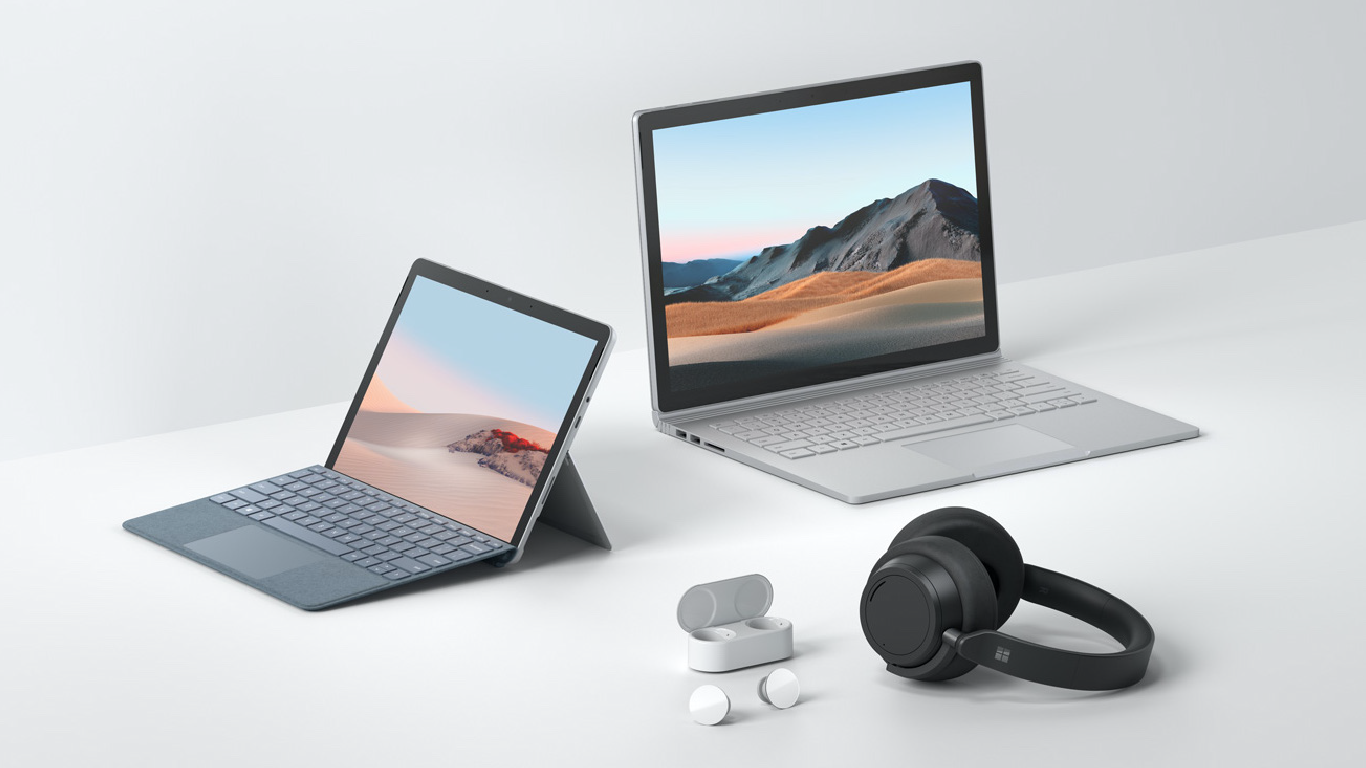
In terms of ports, the Surface Book 3 two USB-A (gen 2) ports and one USB-C (gen 2) port, as well as a 3.5mm headphone jack, 2 Surface Connect ports (one on the base and one on the tablet itself) as well as a full-size SDXC card reader. The Surface Book 3 is also compatible with the Surface Dial for on/off interaction.
The Flip 13 comes with two configurations for in-built ports, with the first one featuring two USB-C (3.1 Gen 1), an audio combo jack and one DC-in port. The second configuration packs in a lot of in terms of connectivity, with two USB-C (3.1 Gen 1) ports and one USB-A (2.0) port. It also features a standard HDMI port alongside an audio combo jack and DC-in port.
In terms of additional features, the Surface Book 3 boasts an ambient light sensor, proximity sensor, accelerometer, gyroscope and a magnetometer. It also features a 5MP front-facing camera for 1080p HD video (which also works with Windows Hello face authentication) and an 8MP rear-facing camera with auto-focus (which also records vide in 1080p HD). Alongside that you’re getting dual far-field Studio Mics and front-facing stereo speakers with Dolby Atmos.
The Flip 13 only comes with the one camera due to its laptop-style design, which boasts HD infrared webcam or an optional FHD world-facing camera. The Flip 13 also supports Windows Hello for hands-free authentication. Alongside this, it features an Asus SonicMaster stereo audio system with surround-sound (plus a handy smart amplifier), an in-built array microphone and more.
ASUS ZENBOOK FLIP 13 VS MICROSOFT SURFACE BOOK 3: PRICING AND VERDICT
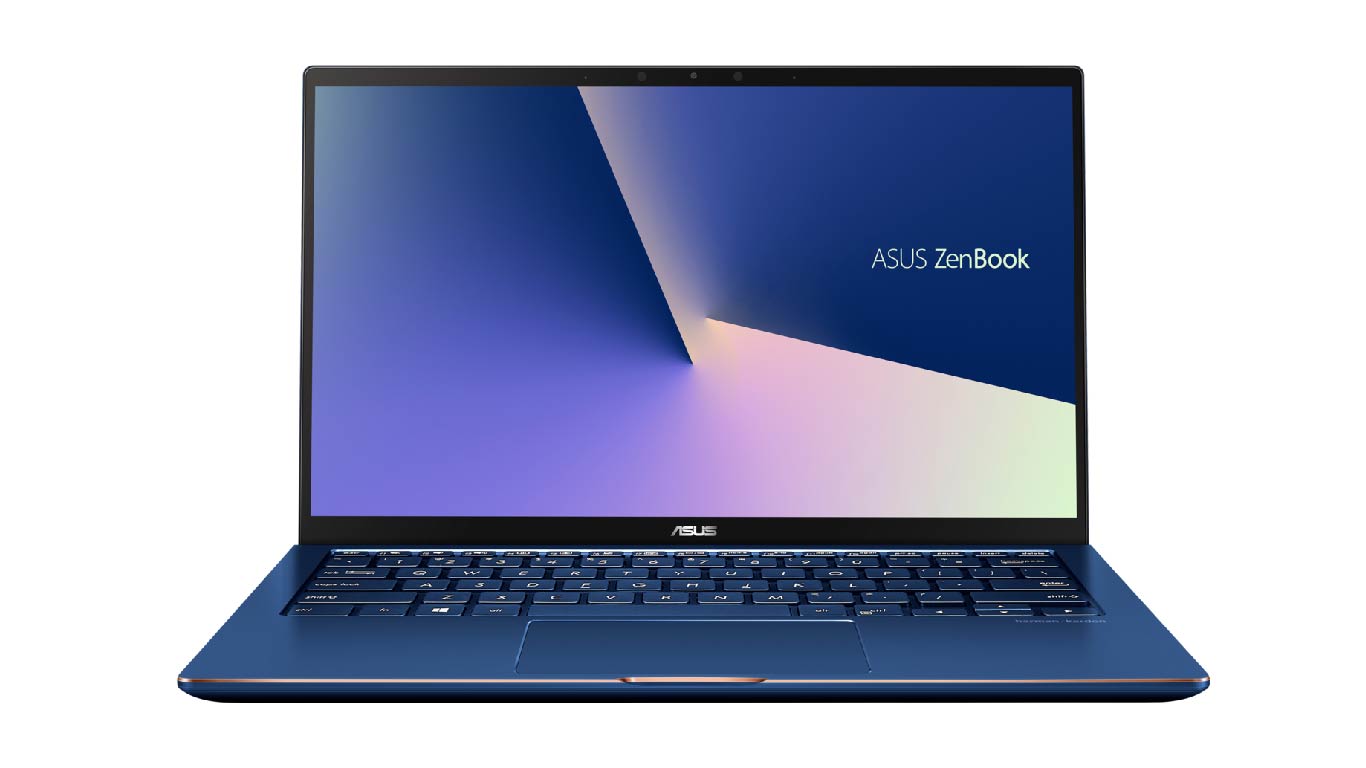
As you can see, both the Asus ZenBook Flip 13 and the Microsoft Surface Book 3 are packed with features and specs that make them two of the best 2-in-1 laptops on the market today. Of course, decent specs and eye-catching attributes also come at a price, as neither of these models sit at the budget end of the hybrid laptop market.
You should also keep in mind that both models come in different configurations, with the better specs and greater performance usually ensuring the price tag goes through the roof.
Of the two, the Surface Book 3 is bar far the more expensive option, but you are getting a more powerful processor and a graphics card strong enough to deal with gaming, graphics-intensive programs and all manner of streaming services. Add in the unique hinge and detach feature and you’re investing in a premium hybrid device that will set you back well over $2,000 in 2020.
Despite offering a more all-round laptop experience compared to the Surface Book 3 (which also requires an additional smart keyboard), the Flip 13 from Asus is a little more affordable with higher end models going for less than $2,000 if you know where to look. Expect that price to drop significantly for the base configurations.
You can find the lowest prices on any given model of Asus ZenBook Flip 13 or Microsoft Surface Book 3 using our price finders below – you can use the Filters to specify the specs you want.
Dom Reseigh-Lincoln has been writing for T3 for over half a decade now, covering everything from mobile phones and laptops right through to video games and gaming peripherals. Purveyor of an excellent beard, as well as some perpetually cheeky offspring, Dom likes to wind down in his spare time by listening to heavy metal.